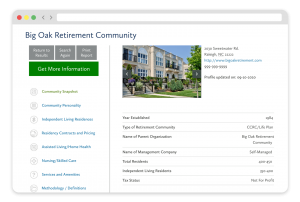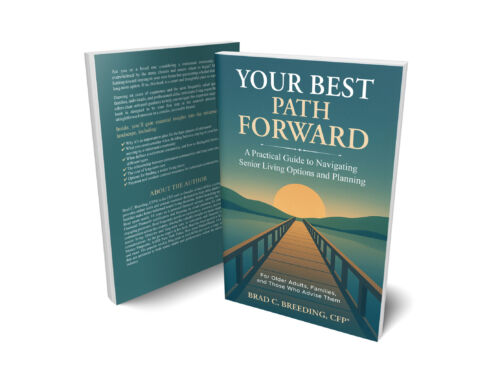Retirement is not a single event; it is a journey that unfolds over several distinct stages. Each stage comes with unique financial considerations, lifestyle changes, and decisions that shape your long-term security and peace of mind. Understanding these stages can help you prepare, adjust, and thrive throughout retirement.
Whether you are still working, preparing to step into retirement, or already living in it, having a clear roadmap makes all the difference. Let’s walk through the five key stages of retirement planning: the working years, pre-retirement, early retirement, mid-retirement, and late retirement.
Stage 1: The working years
For most people, their career spans from their 20s until their early 60s. During this stage, you are building the foundation for your retirement through your income, savings, and investment choices.
The financial focus in this phase is on accumulation, i.e., growing your retirement nest egg, paying down debt, and setting yourself up for financial flexibility later in life. During pre-retirement, your primary job is to save consistently and let time and compounding interest work in your favor.
Key actions to take during the working years
- Maximize your retirement contributions. Contribute regularly to tax-advantaged accounts such as 401(k)s, IRAs, or other employer-sponsored plans. If your employer offers a match, always contribute enough to capture the full match; it’s essentially free money.
- Diversify investments. It is helpful to work with an experienced financial advisor to choose an asset allocation that balances growth potential with your risk tolerance and time horizon. In your earlier retirement saving years, stocks may play a larger role. As you approach retirement, however, a gradual shift toward bonds or lower-risk assets may be appropriate.
- Pay down high-interest debt. Reducing or eliminating debt before retirement allows more of your income to go toward savings and provides long-term peace of mind.
- Plan for healthcare expenses. Consider taking advantage of a health savings account (HSA), if available, which lets you use pre-tax dollars to pay for healthcare expenses. It’s also a good time to start thinking about potential long-term healthcare needs, including potentially purchasing a long-term care insurance (LTCi) plan.
- Educate yourself. Learn about rules around Social Security, Medicare, and pensions (if you have one) so you have realistic expectations about your future income sources. It’s also a good time to create important planning documents like a will, trust, advance directives, and power of attorney, if you haven’t already.
^ back to top ^
>> Related: Does Your Retirement Plan Overlook This Crucial Decision?
Stage 2: Pre-retirement
The second stage occurs in the five to 10 years leading up to your retirement and focuses on preparing for the various adjustments that accompany this milestone. It’s also the “home stretch” of your career when your savings picture becomes clearer and your retirement timeline comes into focus.
It’s important to fine-tune your financial plan during this time, evaluating whether your savings will support your lifestyle goals and making last-minute adjustments if needed. This is also a period during which you should begin to prepare for the psychological shift from earning and saving to withdrawing.
Key actions to take during pre-retirement
- Refine your retirement budget. Estimate your retirement expenses realistically (factoring in inflation), including things like healthcare, travel, hobbies, and day-to-day living costs.
- Run retirement projections. Once again, it is wise to work with an experienced financial advisor and accountant, who can help you test whether your savings will last based on your retirement goals. There are also free online retirement calculators that can be useful. Social Security calculator | AARP retirement calculator
- Plan your retirement income strategy. When working with your financial advisor, decide when you’ll begin claiming Social Security, how you’ll draw from various retirement accounts, and whether you’ll continue part-time work.
- Eliminate any remaining debt. Ideally, you will go into your retirement years with little to no outstanding debt. Work toward paying off your mortgage or other major financial obligations, if possible.
- Boost retirement savings. If you have a 401(k) (other than a SIMPLE 401[k]), 403(b), SARSEP, and/or governmental 457(b) retirement account, take advantage of catch-up contributions, which are allowed for those over age 50.
- Think about your desired retirement lifestyle. In addition to financial decisions, there are also more personal (and often emotional) changes that will come with retirement. Consider where you’ll live, how you’ll spend your time, and how your routine will change.
^ back to top ^
>> Related: 4 Must-Dos of Retirement Planning
Stage 3: Early retirement (transitional years)
Early retirement covers the first five years or so after leaving full-time work. For many, this is the “honeymoon phase” of their retirement. It’s a season of rediscovery: finding purpose, structure, and fulfillment in life beyond the routines and identity that work once provided while also enjoying newfound freedom.
This stage often calls for reassessing spending patterns and refining income strategies to ensure long-term stability. The priority here is managing withdrawals wisely so your retirement savings last for the long haul while still enjoying the fruits of your years of hard work.
Key actions to take during early retirement
- Stick to a savings withdrawal plan. A common rule of thumb is the “4% rule,” which suggests you can withdraw 4% of your total balance in your first year of retirement as a baseline to gauge your spending habits. (Some financial planners suggest this strategy is out of date, however.) While your personal plan may differ, the 4% rule is often a good approach for annual withdrawals. Tthe key is to monitor spending to ensure you’re not depleting your retirement funds too quickly.
- Rebalance investments. Work with your financial advisor to ensure your investments are in the right place for this stage. Your portfolio should now prioritize stability and income with enough growth potential to outpace inflation.
- Determine your housing and long-term care preferences. Where you will live as you grow older is one of the biggest retirement-related decisions you’ll make. Think about whether you want to age in place or move to a retirement community. Also think about the who, what, and where of any care you may eventually require, and explore long-term care insurance if you haven’t already.
- Health insurance planning. If you retire before Medicare eligibility (age 65), you’ll need to secure private health coverage. Retiree plans may be available through your employer, and there are also options on the Health Insurance Marketplace.
- Pursue meaningful activities. This is your opportunity to take full advantage of your free time! Many retirees find joy in volunteering, encore careers, or part-time work … not just for extra income but for purpose and social engagement.
- Stay flexible. Early retirement often reveals unexpected expenses or lifestyle preferences. It’s a good time to adjust as needed.
^ back to top ^
>> Related: Working After Retirement …or Not: How to Facilitate Both Options
Stage 4: Mid-Retirement
The mid-retirement stage usually spans your mid-70s through mid-80s, or as long as you are still able-bodied and high functioning without assistance. By this time, routines are established, and your lifestyle may still be quite active and independent, but some people might slow down compared to the excitement of early retirement. Healthcare needs may begin to play a larger role during this stage.
The emphasis shifts to financial sustainability. This means protecting your nest egg, managing healthcare costs, and ensuring your financial plan continues to meet your needs.
If you are entering or already in mid-retirement, this is the ideal time to start preparing for your future, while you are still active and able to make decisions with confidence. Putting off these choices can leave you and your loved ones facing challenging and often costly situations down the road.
One of the most important and complex factors to address is your living arrangement. Where you choose to live as you grow older will have a far greater impact on your retirement than many realize, shaping not only your lifestyle but also your health, independence, and overall well-being.
Key actions to take during mid-retirement
- Evaluate your spending. Now that you are fully settled into your retirement years, adjust your budget as necessary. For instance, travel and leisure may decrease but medical expenses often rise during this phase.
- Plan for required account withdrawals. Per IRS rules, required minimum distributions (RMDs) from certain tax-deferred retirement accounts start in your early 70s. Make sure to comply to avoid excise tax penalties.
- Estate planning review. Be sure your important planning documents like your will, trust, power of attorney, and advance directives are up-to-date. Also verify that your beneficiary designations are still accurate.
- Simplify finances. As you grow older, your financial picture will often become less complex. This can be a good time to consolidate accounts and make sure your spouse or trusted family members understand your financial picture.
- Enact your senior living and care plan. This is the period during which many people will make a senior living move to a smaller home or a retirement community, such as a continuing care retirement community (CCRC or life plan community). For some, it may be easier to adjust to a new home if you opt to make such a move when you are younger and healthier and can enjoy your new carefree lifestyle. Such moves also can help older adults maintain comfort and peace of mind while preparing for potential health-related transitions down the road.
^ back to top ^
>> Related: Why Do Many Retirement Community Residents Say, ‘I Wish I’d Moved Sooner’?
Stage 5: Late retirement
Late retirement typically begins in a person’s mid-to-late 80s. At this point, health, mobility, and daily living needs often take priority. In some cases, a person’s health will have declined to the point of requiring support with activities of daily living with little chance of regaining their prior independence. In fact, 2024 data from the American Association for Long-Term Care Insurance shows that nearly 70% of all long-term care insurance claims begin after age 80.
The goal for late retirement is that all the planning done during early and mid-retirement will make the transition as smooth and low-stress as possible, while also ensuring a higher quality of life despite potential increases in care needs. Ultimately, the focus should be on peace of mind and legacy: ensuring you have the resources to cover your medical and caregiving costs, while also finalizing your estate plans.
Key actions to take during late retirement
- Manage healthcare and caregiving needs. Ensure you have the right support, whether through family caregivers, professional in-home support services, or long-term care facilities.
- Simplify day-to-day finances. Consider automatic bill payments and easy access to funds. Be sure your power of attorney designations are still up-to-date.
- Finalize legacy planning. Make sure your estate documents are clear, your wishes for end-of-life care are documented, and that your heirs know what to expect.
- Focus on comfort. This stage is less about financial growth or wealth accumulation and more about ensuring quality of life and dignity.
^ back to top ^
>> Related: The Paradox of Aging: Growing Older May Actually Yield Increased Happiness
Effective planning for each stage of retirement
Retirement is not just about leaving work; it’s about creating a fulfilling and financially sustainable life across multiple stages. The earlier and more effectively you prepare, the more freedom and flexibility you’ll have when each stage of retirement arrives:
- The working years: Build wealth and eliminate debt.
- Pre-retirement: Fine-tune your plan.
- Early retirement: Enjoy freedom but manage withdrawals.
- Mid-retirement: Prioritize sustainability and health.
- Late retirement: Focus on security, caregiving, and legacy.
By recognizing and planning for each stage, you can approach your retirement with increased clarity, confidence, and peace of mind.
Much of the content of this guide comes from the book “What’s The Deal With Retirement Communities,” by myLifeSite cofounder Brad C. Breeding, CFP. The third edition of the book will be released later this year.

FREE Detailed Profile Reports on CCRCs/Life Plan Communities
Search Communities






